Android Lollipop: Release date & specs
Android to get revamped interface, pop-up notifications and battery life improvements

Android 5.0 Lollipop has been released in a staggered rollout to users, Google confirmed with a tweet.
The tweet from Google's account reads: "#AndroidLollipop rollout has started and will soon be available on most #Nexus devices. Dessert is served."
#AndroidLollipop rollout has started and will soon be available on most #Nexus devices. Dessert is served. pic.twitter.com/XVFX2tEbHvAndroid (@Android) November 12, 2014
The Lollipop update was previously reported to have been delayed for Nexus devices until November 12, however, due to some Wi-Fi bugs discovered at the last-minute. The news came from Android Police, pointing to older Nexus devices as the main culprit.
UK pre-orders for the Nexus 6 were slated to begin on November 3, but that has now been pushed back to November 18.
Android L, to give the mobile OS its working title, was first previewed at Google's 2014 I/O developer conference in San Francisco and introduced a raft of new features, including a revamped interface, better battery life and performance gains.
The operating system has been described as the biggest update Google has ever released, with the HTC Nexus 7 set to be the first device to come with Android Lollipop already preloaded. Following this, Samsung has also announced that Android Lollipop for the Galaxy S5 and Galaxy Note 4 will be available by the end of the year.
Various features of the operating system have already been revealed, with it previously being announced that Google plan to automatically encrypt users' data in the same way as Apple, and that Samsung's secured Knox container will also be part of Android L as standard.
Get the ITPro. daily newsletter
Receive our latest news, industry updates, featured resources and more. Sign up today to receive our FREE report on AI cyber crime & security - newly updated for 2024.
The SDK is available for developers to download onto Nexus 5 and Nexus 7 (2013) devices. General release is expected in the second half of 2014, but there is no specific launch date.
So what's new?
Android Lollipop has added 5000 new APIs and debuted the 'Material Design' interface.
This design aims to simply the Android interface and emphasise key buttons by allowing developers to play with depth settings and add shadows.
Android L also bring a vibrant colour palet, as well as a comprehensive set of animation and transition effects.
1. Notifications
Google has improved notifications. Users will be able to get a full notification appear on the lock screen (see below on left), then either double tap to launch apps or swipe them away.
Meanwhile, a Heads-Up notification (below on right) feature allows Android to pop-up unobstrusive alerts when receiving an incoming phone call or message while using an app.

Google has made a noticeable change to the keyboard by removing the space between individual letters. The space bar and return icons are more prominent too.
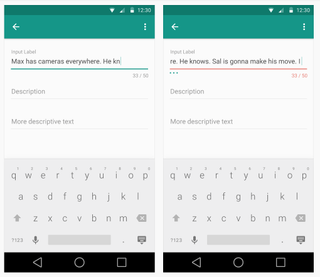
Android has introduced Project Volta' to optimise battery life. This will include a new battery saver feature, which it claims will extend battery life by up to 90 mins on existing devices such as the Nexus 5.
A battery predictor will also tell users exactly how long they have to leave the device plugged in before it is fully charged.
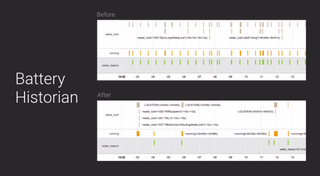
For developers, Android L includes a comprehensive monitoring tool known as Battery Historian. This provides a detailed breakdown of any software and hardware features using the battery at any given time. A Jobscheduler API will also allow developers to make apps more efficient. 4. Performance increase
Android L marks the switch from the Dalvik "just in time" compiler that processes applications on the fly to ART, which provides efficient compiling.
Google claims by switching to ART, devices will have 2x performance over those running Dalvik. Android L will also support ARM, x86 and MIPS as well as 64-bit instructions as standard.
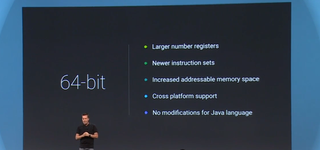
Google wants to make it easier for businesses to deploy Android. The firm has struck a deal with Samsung to bake in the Knox' secure container into Android L as standard. This allows personal and work data separation and lets admins deploy apps in bulk.
These features will be native to Android L, and Google will provide an app to make this functionality available on Ice Cream Sandwich and above.
Another interesting feature is the ability to unlock the device without having to enter a PIN code.
Dubbed 'Personal Locking', devices running Android L will be able to detect whether the person swiping the lock screen is the owner of the device. Handsets aim to do this by recognising if they are in 'trusted environment'. You can program in a secure location, such as 'home', and the device will not present the pin-lock when you are within this location.
Similarly the device can be unlocked without the need for a password if the device is able to recognise a synced bluetooth wearable device that's nearby. 6. Google Fit
As expected, the Google Fit hub was previewed and this is expected to be ready for the final release of Android L. The system will gather health data from sensors on mobile devices and wearables as well as other apps.
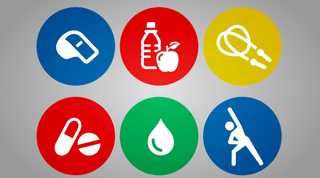
Based on the data it gathers, Google Fit will make suggestions on how to improve your diet, exercise and routines. Nike, Adidas, HTC and Motorola are among the firms which have signed up to allow integration with Google Fit. The SDK is set to be released in the coming weeks. 7. Widgets
Android L introduces two types of widget. The Recycler View widget is similar to a list view you'd find in apps such as email, whereas the Card View widget lets developers display information in bite-sized chunks, much like the built-in Google Now app.
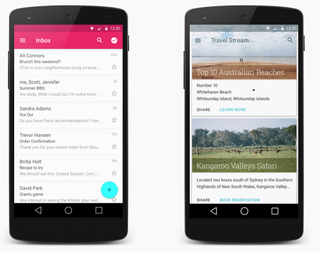
Android L will introduce simple and bold system icons as Google wants to make things as clear as possible. The icons for home, back and recent apps have also been changed - taking the form of a triangle, circle and square.
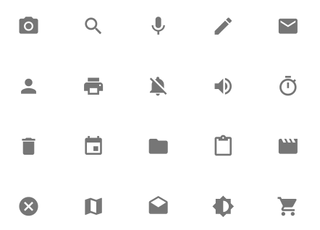
Within Android L, you will see one of three types of buttons emphasised - a circular floating button', a rectangular raised button' and a more traditional flat button'.
These will represent key actions within apps and Google recommends developers limit themselves to using one type of button design per page.
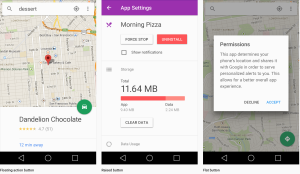
9. Font
The Roboto font, which was introduced in Ice Cream Sandwich, has been refined. Google is offering a basic set of styles, which it has determined are optimised for use on all screen sizes, ranging from watches through to tablets and TVs.
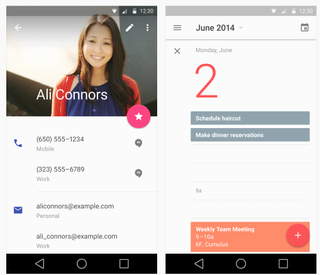
Google has integrated the Chrome app deeply into Android L. The material design interface has been carried over to the web browser in real-time.
Open Chrome tabs are now listed in the recent view/multi-tasking carousel alongside apps that are running.
Google has opened up an API to developers which will allow users to dive from the browser straight into an app from the search results page.

This article was originally published on the 25 June 2014. It has been updated multiple times (most recently on 13/11/2014)




